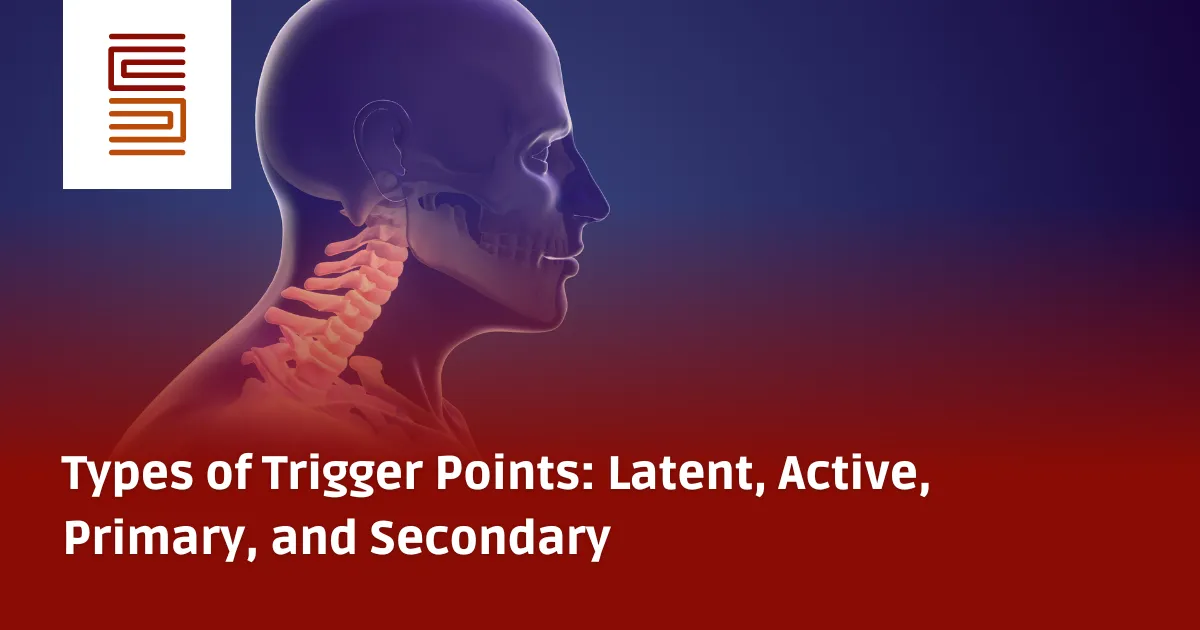Trigger Point Symptoms: Beyond Pain—Understanding Other Effects
Discover trigger point symptoms beyond typical muscle pain, including numbness, dizziness, digestive issues, and other unexpected neurological and sensory symptoms
Understanding the Full Range of Trigger Point Symptoms
While trigger points are widely known to cause muscle pain and stiffness, they can also produce unexpected symptoms that are not typically associated with the muscular system. These additional symptoms result from trigger points affecting the nervous system, particularly the autonomic nervous system, creating referred motor and sensory distortions.
Identifying these lesser-known symptoms is crucial for accurate diagnosis and effective treatment.
Common Non-Muscular Symptoms Associated with Trigger Points
Trigger points can cause a variety of symptoms that may seem unrelated to muscle dysfunction, including:
-
Numbness or Tingling
Often mistaken for nerve impingement or neuropathy, trigger points can cause sensations of numbness or pins-and-needles in limbs or extremities. -
Visual Disturbances
Trigger points, particularly in neck muscles, may lead to blurred vision, visual fatigue, or sensitivity to light. -
Balance Problems (Vertigo) and Dizziness
Trigger points affecting neck and head muscles can interfere with balance and spatial orientation, resulting in dizziness or vertigo. -
Excessive Eye Tearing
Trigger points in facial or neck muscles may stimulate the autonomic nervous system, causing the eyes to tear excessively without an apparent reason. -
Sore Throat
Pain and tightness from trigger points in neck muscles can refer sensations resembling a sore throat. -
Sinus Discharge
Trigger points in facial or neck muscles may create sinus-like symptoms, including nasal congestion or discharge. -
Digestive Issues (Abdominal Bloating, Heartburn, Vomiting)
Trigger points in abdominal muscles and diaphragm can cause gastrointestinal discomfort, mimicking conditions such as acid reflux, bloating, or even nausea. -
Gynecological Disorders (e.g., Dysmenorrhea)
Trigger points in the pelvic region and lower back can contribute to painful menstrual cramps and pelvic discomfort.
Why Trigger Points Cause Non-Muscular Symptoms
Trigger points affect the autonomic nervous system (ANS), which controls involuntary bodily functions. When trigger points irritate or sensitize nearby nerves, this neurological disturbance can manifest as:
- Sensory distortions (e.g., numbness, visual issues, tingling sensations).
- Motor disruptions (e.g., balance issues, dizziness, abnormal reflexes).
- Visceral dysfunction (e.g., digestive problems, menstrual pain, sinus symptoms).
This interaction between muscular dysfunction and the ANS explains why seemingly unrelated symptoms occur, complicating diagnosis and treatment.
Recognizing Trigger Point Symptoms
Due to their complexity, these symptoms often lead patients and healthcare providers to mistakenly attribute issues to non-muscular sources. Properly recognizing trigger points as the potential root cause involves:
- Conducting a detailed patient history to identify patterns of symptoms.
- Performing comprehensive physical assessments, including trigger point mapping.
- Considering trigger points as a possibility when conventional treatments for symptoms fail to deliver lasting relief.
Effective Treatment Strategies for Trigger Point Symptoms
An integrated approach is required to effectively manage and alleviate symptoms caused by trigger points:
-
Trigger Point Therapy:
Techniques such as manual trigger point release, dry needling, or therapeutic massage effectively reduce muscle tension and neurological irritation. -
Corrective Exercise and Stretching:
Strengthening inhibited muscles and lengthening tight ones restores muscular balance and reduces trigger point formation. -
Postural and Ergonomic Adjustments:
Identifying and modifying daily activities and habits that contribute to muscular tension can prevent recurrence of trigger points and their related symptoms. -
Holistic Pain Management:
Comprehensive care plans may include addressing dietary habits, stress management techniques, and appropriate hydration to support overall neuromuscular health.
New Mexico Support Network’s Comprehensive Approach
At New Mexico Support Network (NMSN), we specialize in managing and treating the full spectrum of trigger point symptoms through:
- Home Care Services: Supporting daily needs and providing strategies to manage chronic pain and associated symptoms.
- Hospice Care Assistance: Comprehensive pain relief and symptom management for individuals with long-term health conditions.
Our holistic approach ensures you receive targeted care addressing not just pain, but the wide array of neurological and autonomic symptoms associated with trigger points.
Take the Next Step in Symptom Relief
If you experience unexplained symptoms such as numbness, dizziness, digestive issues, or other chronic discomforts, addressing trigger point dysfunction could be key to restoring your well-being.
Contact New Mexico Support Network today for personalized assistance:
Email: care@nmsupport.com
Phone: +1 833-773-0033 or +1 575-449-2009
Visit: New Mexico Support Network




